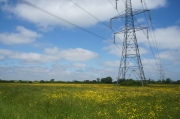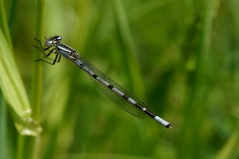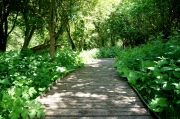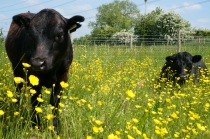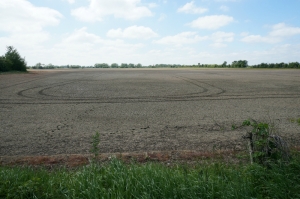A couple of weeks ago I had the opportunity to meet with Louise King, Estate Manager of Chimney Meadows and Lisa Lane, Upper Thames Living Landscape Manager for Berks, Bucks and Oxen Wildlife Trust (BBOWT). I was interested in talking to them about their work at Chimney Meadows, a former 250 hectare farm which BBOWT bought in 2003 after the land had been intensively farmed for wheat and barley and over grazed. The intensive farming methods used had stripped the land of its natural flora, fauna and pollinators. And the reliance on harmful insecticides and fertilizers used in modern day farming had created an area of plant monoculture devoid of plant diversity, providing little if any suitable habitat for native species. In addition over grazing with large commercial breeds had also impacted heavily on the land.
As part of the Wildlife Trusts recovery plan for nature the Wildlife Trust has been working hard to raise funds to buy key plots of land to restore to natural habitat with the intention of reconnecting these nature reserve pockets to the wider landscape. This is referred to as a Living Landscape and Chimney Meadows forms the upper Thames Living Landscape. By working with local landowners and conservation groups BBOWT aims to restore the charismatic riverside habitats of the Upper Thames, lowland meadows, floodplain grazing marshes and reed beds – returning them to their former glory.
So far at Chimney Meadows BBOWT staff have managed to restore 70 hectares of old arable fields to species rich meadows using the arable reversion technique. This requires a nearby source field of wildflower seeds to harvest from and sow on neighbouring receptor fields to help establish the new meadows. In spring and summer these grasslands are transformed by an ever-changing display of wild flowers that attract busy communities of insects. On my visit there I saw orange tip butterflies and there was an abundance of mating white legged damselflies alongside the damp ponds and ditches. And as I walked along a stunning meadow field edge I was noisily berated by an anonymous angry bird that followed me in the hedge. The site is popular with curlew, snipe, meadow pipit, chiffchaff, willow warbler, whitethroat, reed bunting, yellow hammer and barn owls. But no matter when you visit there is always something to see. In April and early May cowslips are in flower, whilst in June and July, plants such as yellow rattle, common knapweed, oxeye daisy and pepper-saxifrage can be found in abundance.
The site is within a natural flood plain and whilst farmers outside of the reserve battle on with damaged crops due to heavy rainfall and floods the Chimney Meadows team is working with nature. As part of the restoration process the wetland meadows have been re established and are allowed to flood in winter providing excellent habitat for declining wading birds such as the curlew and overwintering wildfowl such as widgeon and teal. Staff and volunteers have also dug a number of ponds and scrapes within the wet grassland with varying depths to suit a wide range of wildlife. Some of which dry out completely and provide habitat for burrowing insects such as solitary bees.
Rather than use the land for crops such as wheat and barley the Chimney Meadows team have decided to graze Dexter cattle which is a lightweight breed with small hooves and of a gentle disposition ideal for land with public rights of way. As the farm is home to a number of Badger sets Chimney Meadows has joined forces with the Badger Trust who are vaccinating badgers in the area to protect cattle from any possible TB infection because BBOWT see the badgers as a positive addition to their wildlife. In addition to selling the beef they produce on the farm, Chimney Meadows is now able to sell the species rich wild flower hay that the meadows produce. Louise and Lisa said it was important to demonstrate that Chimney Meadows, now the largest Wildlife Trust nature reserve, could function both as a working farm and as a fantastic habitat for wildlife. In this way it can be seen as an excellent example to farmers and landowners showing how they can make a positive contribution to wildlife.
BBOWT is currently raising funds for another important site called Meadow Farm, a 28 hectare site by the River Ray in the Oxon – Bucks border. It has been untouched by the plough since medieval times and screened from surrounding farmlands by high hawthorn and mature trees. It is a prime example of the surviving ridge and furrow of fields last ploughed by Oxen in the Middle Ages and its seasonal flooding has created species rich meadows of which there are only 1500 hectars left across the whole UK. It has no legal protection and could be lost for ever if BBOWT are unable to raise the funds to secure it.
Because I have experienced first hand the amazing work that BBOWT have achieved, time and time again across a range of their nature reserves I am urging everyone to send a donation, however small, to help save Meadow Farm. They only have until July 31st to raise sufficient funds and protect the site for generations to come. If you really believe that our meadows and the flourishing biodiversity that they create are worth saving then please donate now.
If you don’t want farming to look like this then please donate and save Meadow Farm http://www.justgiving.com/meadowfarm

